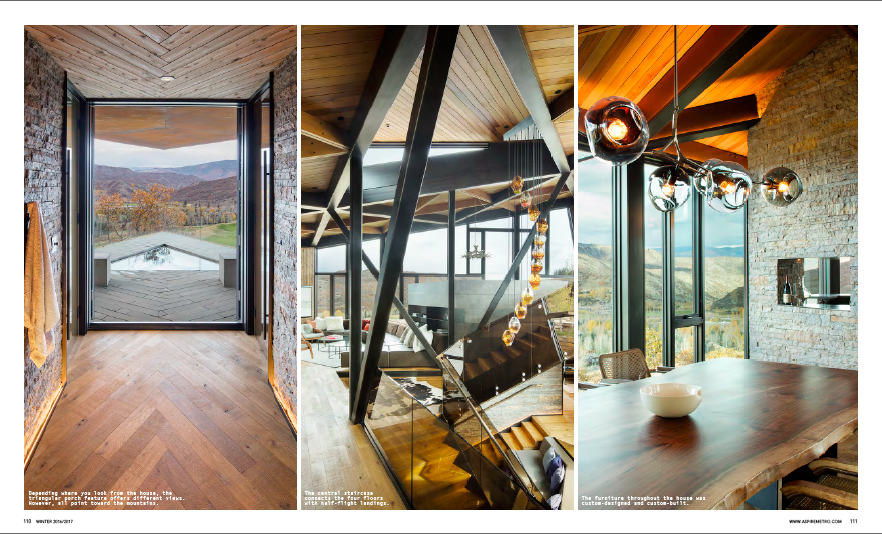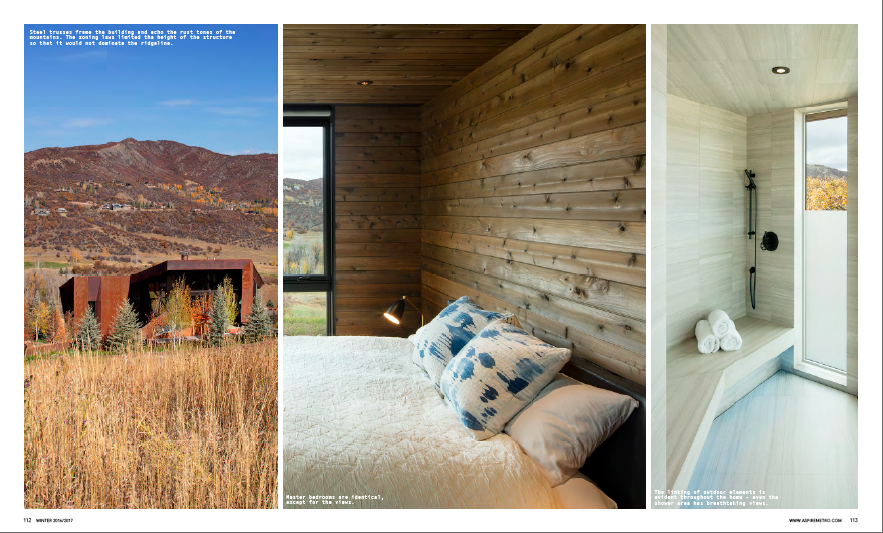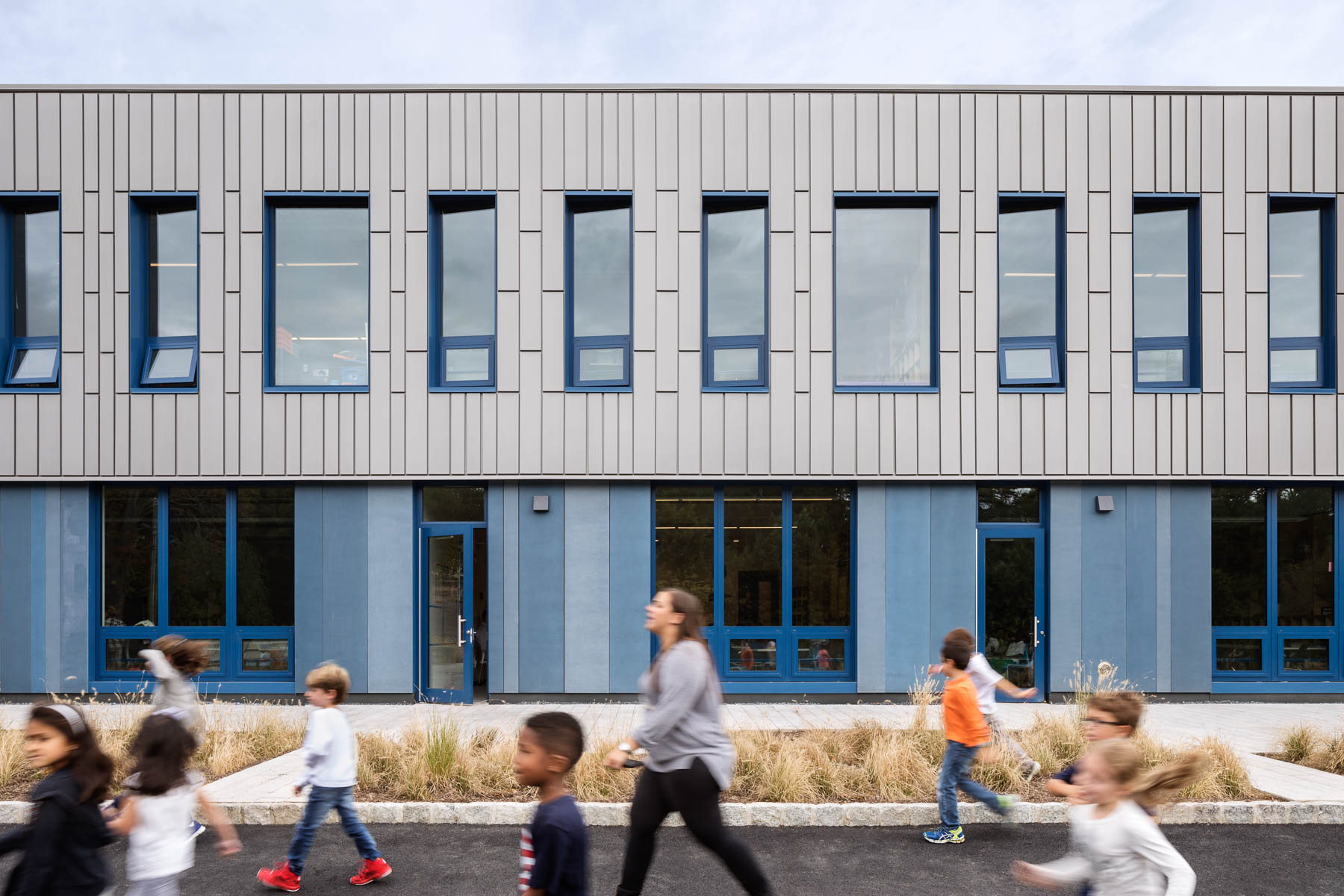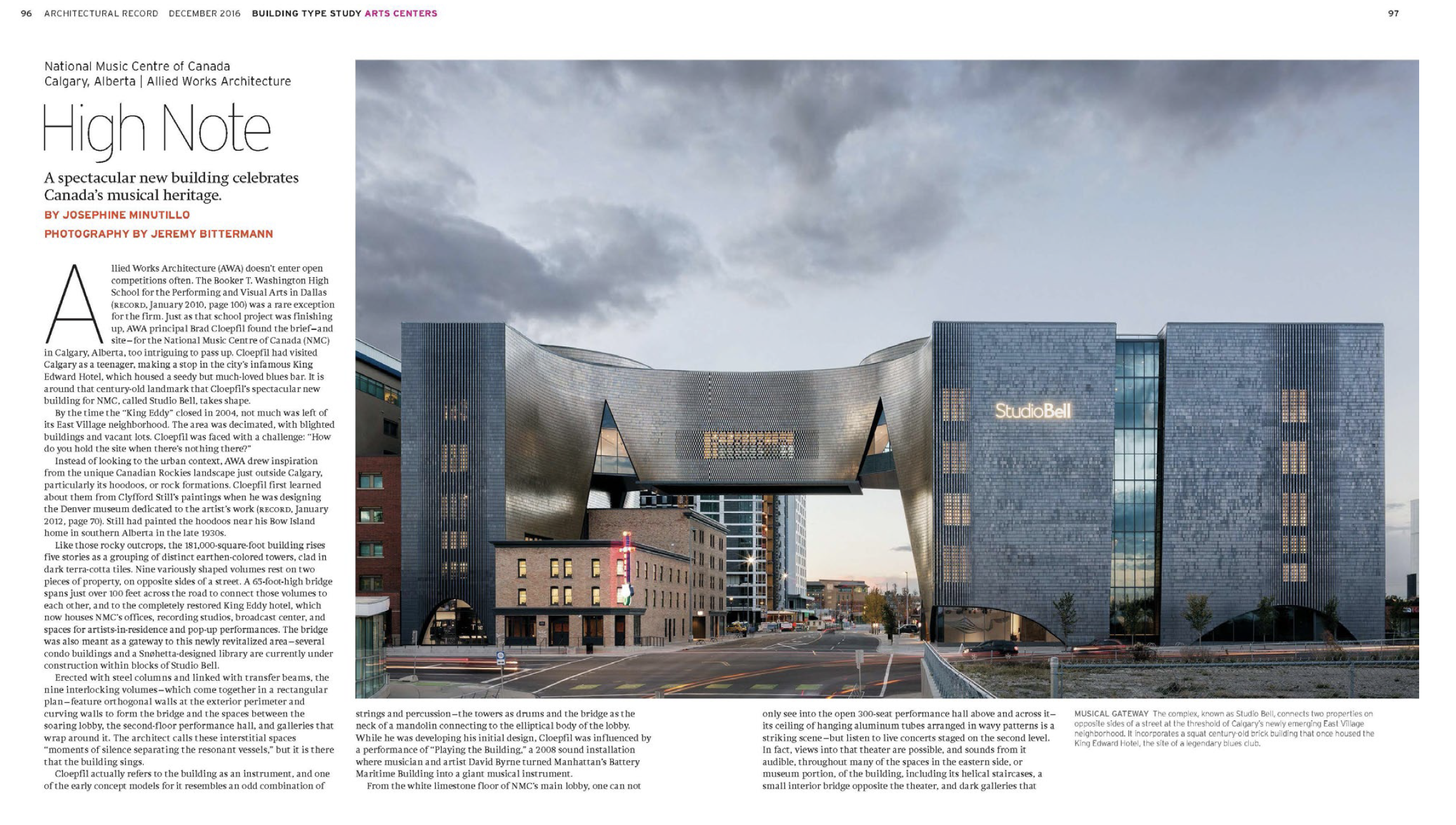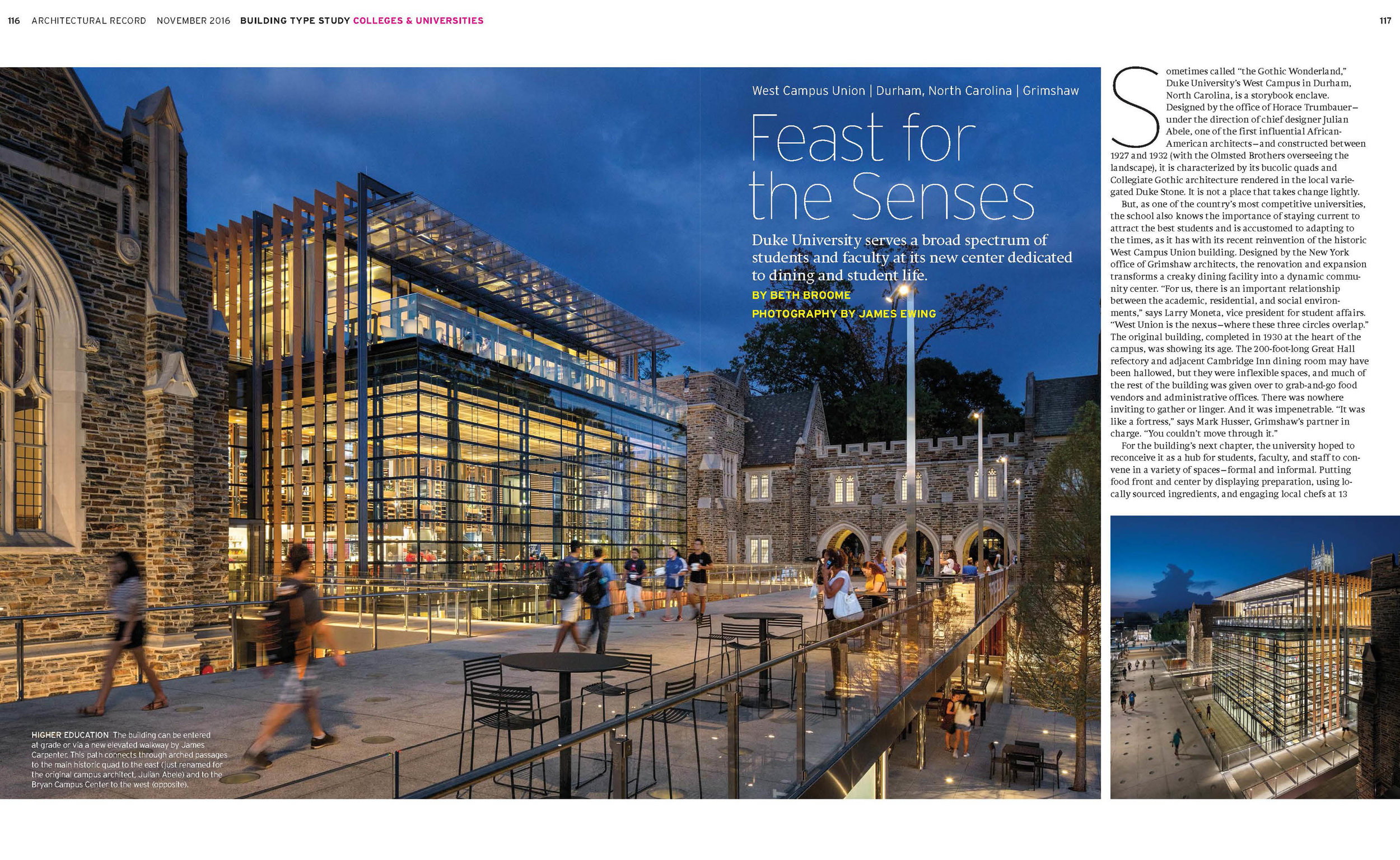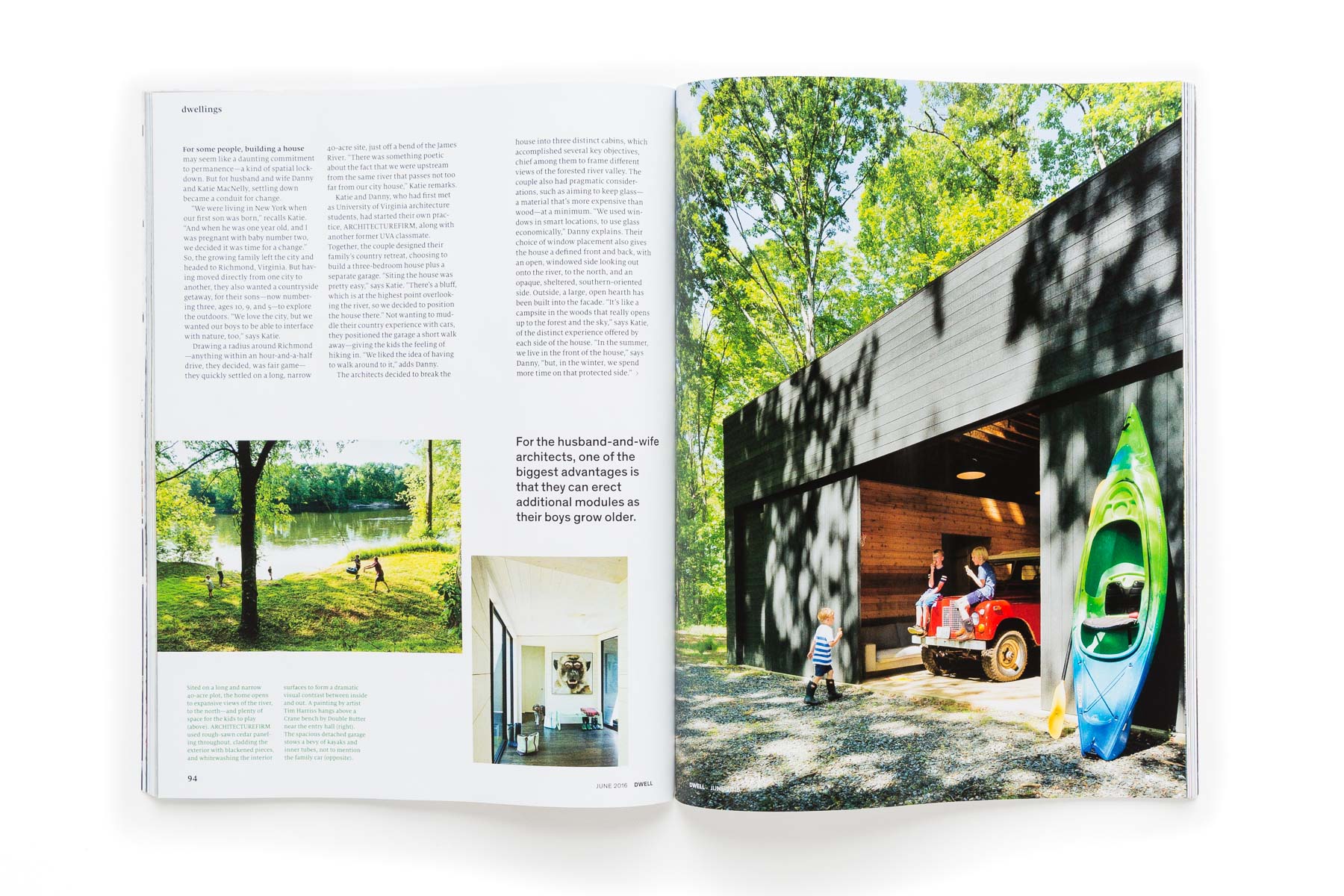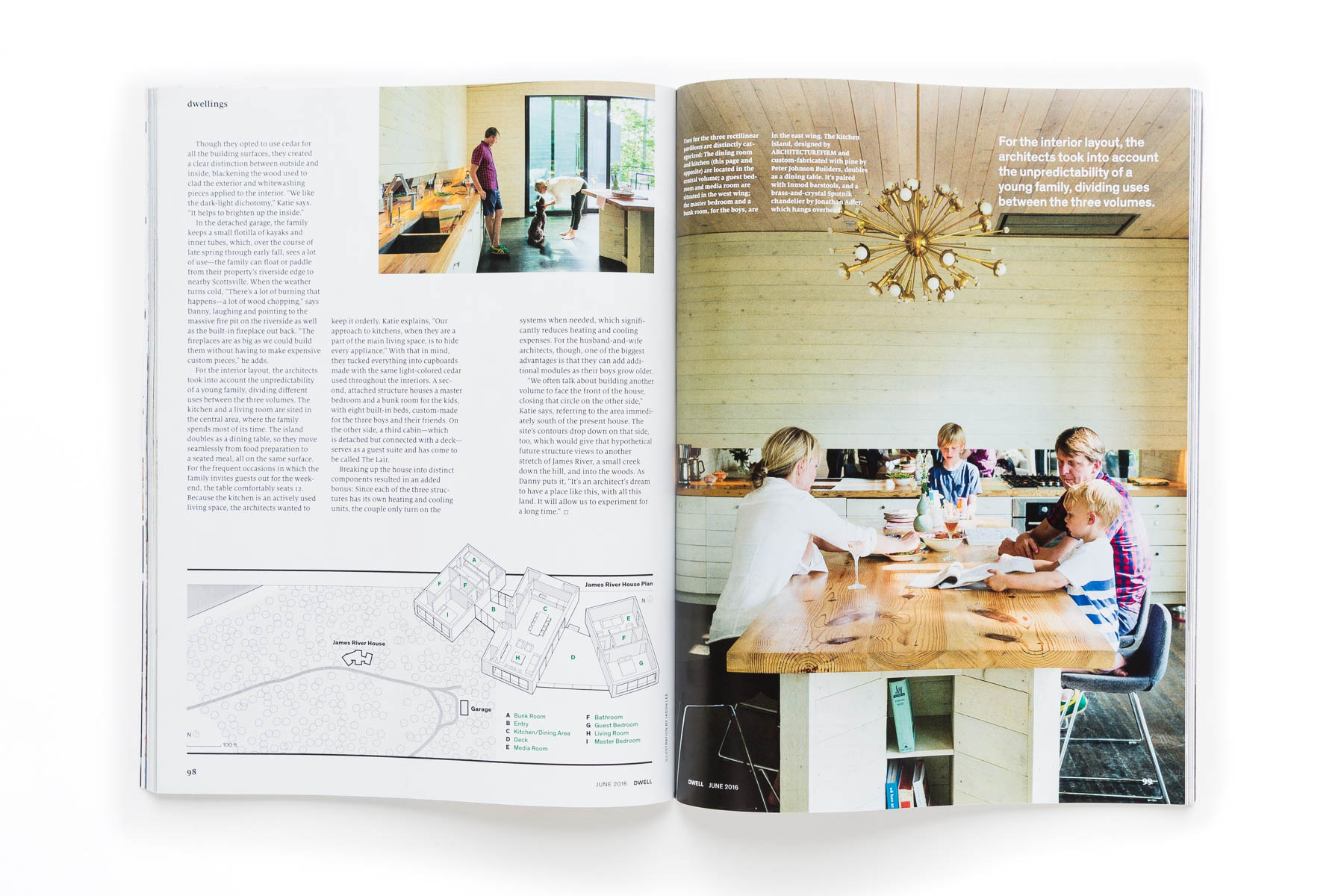NYT review of Richard Barnes' State of Exception Exhibition /
Photo by Richard Barnes
You can read the New York Times exhibition review here: https://www.nytimes.com/2017/03/03/arts/design/state-of-exception-estado-de-excepcion-parsons-mexican-immigration.html?emc=eta1.
Jeremy Bittermann's images of Skylab's Aspen Residence in Aspire's Winter Issue /
Stagecraft: Models and Photos, an exhibition at Columbia University with photography by James Ewing /
Stagecraft includes 14 photographs by James Ewing with multiple interpretations of six models. Illustrating structural details rather than whole buildings, the models were made during the 1990s and early 2000s by Columbia GSAPP students of Professor Kenneth Frampton as a pedagogical exploration of the history of architectural tectonics.
James’ photographs invite a reexamination of how architectural creativity and thinking unfold through the picturing of objects and the crafting of images. In preparation for this project James studied the archive of the model photographer Louis Checkman, located at the Avery Drawings & Archives Collection at Columbia University. He took inspiration from the methods of Balthazar Korab and Ezra Stoller, and exchanged ideas with Jock Pottle, a prolific architectural model photographer active during the 1990s and early 2000s.
The exhibition is curated by Irene Sunwoo, Columbia GSAPP Director of Exhibitions, and Adam Bandler, Assistant Director of Exhibitions.
The Opening Reception and Discussion take place this Thursday, February 9, 2017 at 6pm at
Arthur Ross Architecture Gallery 1172 Amsterdam Avenue New York, NY 10027
Richard Barnes' State of Exception Exhibition at Parsons School of Design, Feb 3 to April 17, 2017. /
The Sheila C. Johnson Design Center (SJDC) at Parsons School of Design presents State of Exception/Estado de Excepción, an exhibition featuring traces of the human experience of migration, including objects left behind by unauthorized border crossers on their journey through the desert into the United States. Together with other forms of related material, they were collected as part of the research of University of Michigan anthropologist Jason De León’s Undocumented Migration Project.
Created by artist/photographer Richard Barnes and artist/curator Amanda Krugliak in collaboration with De León, the exhibition includes an installation of hundreds of backpacks left behind by migrants crossing the Sonora Desert of southern Arizona, numerous pieces of clothing and ephemera, and photographs and videos taken by Barnes on location along the U.S.-Mexico border. The installation also features excerpts of original recordings of audio interviews with migrants as part of De León’s work.
“Now, more than ever, in the aftermath of a presidential campaign that fed off anti-immigrant and xenophobic rhetoric, it is absolutely critical to look deeper into the migrant experience and raise questions as to what the future may hold for the thousands of people fleeing dire poverty, drug cartel violence, and political instability to the south,” the curators said in a statement. “State of Exception/Estado de Excepción honors the sheer materiality of the migrant experience. These objects are fragments of a history of both suffering and resiliency, and the images and voices reveal the desolation, hope and trials of their odysseys.”
“With this exhibition, we are pleased to declare the SJDC galleries a state of inclusion in which migrants are welcome,” said Radhika Subramaniam, Director/Chief Curator of the SJDC.
State of Exception/Estado de Excepción was launched at the Institute for the Humanities at the University of Michigan and has travelled to Detroit, Grand Rapids, Mich., and Phoenix prior to its presentation in New York City. At each venue, the exhibition has been updated to include new material, reflecting and responding to the ongoing public debate around immigration, as well as the continuous efforts to reform immigration in the United States and the inevitable backlash. This fifth edition features new objects: tires used by U.S. Border Patrol to clear the ground and make desert footprints more visible, and photographs taken by migrants themselves on their perilous journeys.
Riverdale Country School by ARO in Architectural Record, Photography by James Ewing. /
Photo by James Ewing.







